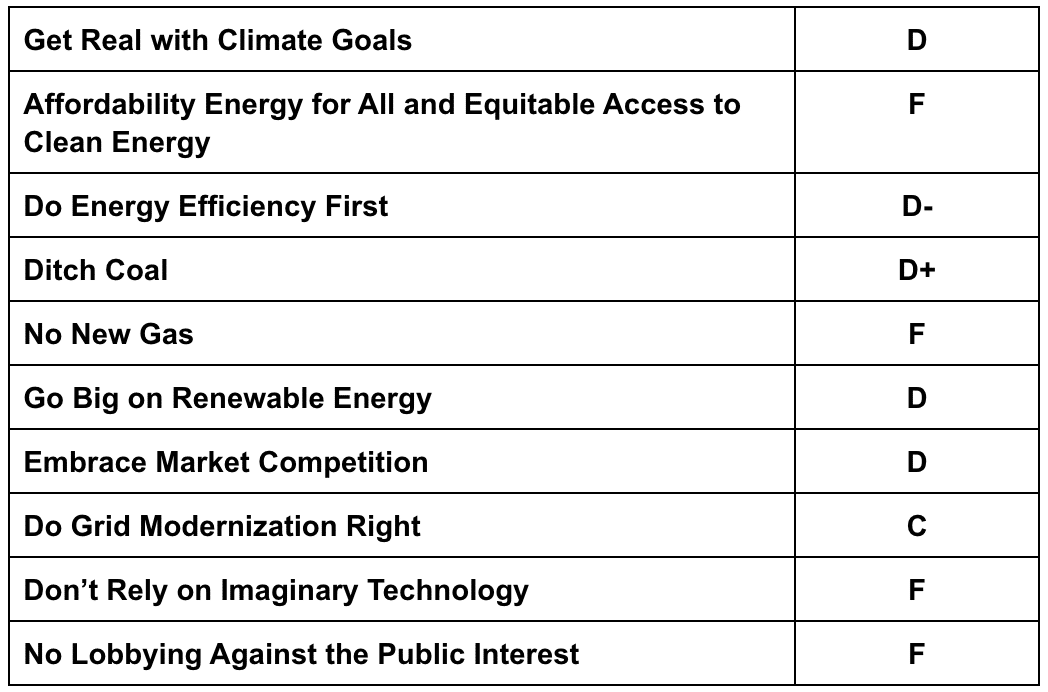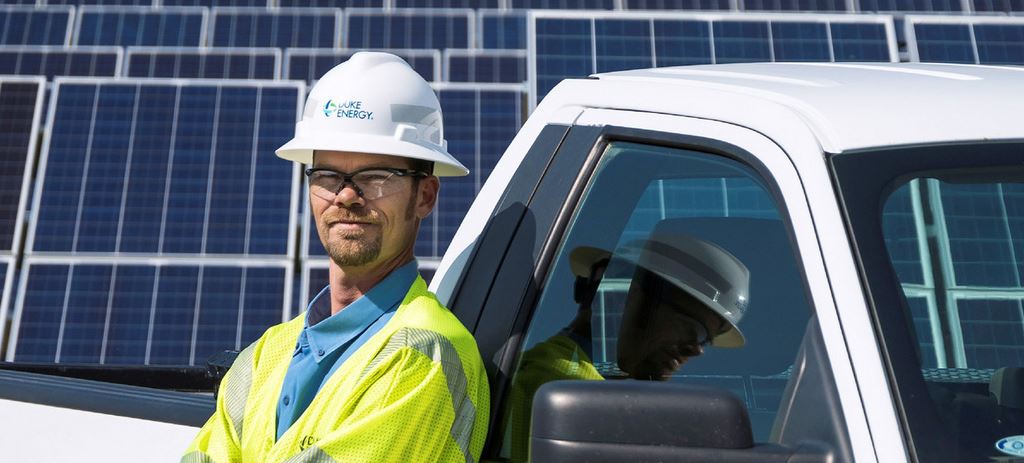More than a dozen clean energy and environmental justice organizations have issued Duke Energy a report card evaluating generation plans outlined in the utility’s most recent Integrated Resource Plans (IRPs) for Duke Energy Carolina (DEC) and Duke Energy Progress (DEP).
 Of the six scenarios presented across the two IRPs, the report card focuses on the base case and the base case with a carbon policy added.
Of the six scenarios presented across the two IRPs, the report card focuses on the base case and the base case with a carbon policy added.
In terms of climate goals, the report card asserts that Duke’s carbon reduction goals are not in line with North Carolina’s Clean Energy Plan to reduce the electric power sector’s greenhouse gas emissions to 70% below 2005 levels by 2030, and attain carbon neutrality by 2050, with neither case scenario reaching the goal.
The base case without a carbon plan increases CO2 emissions between 2030-2035, while base case with carbon policy reaches only 59% of the statewide goal by 2030 and 62% by 2035.
In terms of ensuring affordable energy for all and equitable access to clean energy, Duke earned an “F” for its plans to increase customer bills across all IRP scenarios. The report also criticizes the company for shutting off power for nearly 17,000 households in North Carolina in November 2020 and not accommodating for the economic and employment hardships brought on by the pandemic.
In terms of maximizing energy efficiency and demand response options, the coalition gave Duke a “D+,” stating that, “Duke fails to do the bare minimum and incorporate all cost-effective energy efficiency measures into its plan, and it fails to model more impactful steps such as considering efficiency as an alternative to new generation assets.”
Duke earned another “D+” in regards to commitments to moving away from coal. Duke plans to burn coal until 2049. That includes at Belews Creek, its second-largest coal plant in North Carolina, which is planned to remain in service until 2039.
As for the “No new gas” portion of the report card, Duke received an “F,” as the utility plans to add up to 10 GW of gas generation by 2035.
In terms of commitments to renewable energy, the report card gives Duke a “D” for raising the renewable generation in its portfolio from 7% now to only 15% in 2035. A model that Duke commissioned for an optimized 2030 generation mix showed the potential for 29-34% renewables by 2030.
Duke also restricted its IRP model to only allow 300 MW/year of new solar for DEC and 200 MW/year for distributed energy resources, while companies currently have 24 times that amount in the interconnection queue awaiting utility approval.
As for embracing market competition, Duke received another “D.” Duke asserts that it is currently unable to pursue certain procurement practices, like bundled all-source, competitive procurement. It said the IRPs do not consider the establishment of a regional transmission organization, which could be an opportunity to streamline transmission operations and save money through regional coordination.
Duke’s highest grade, a “C,” related to its modernization process. Here, the company acknowledged that the future of the grid will include large amounts of distributed generation and expressed a commitment to finding the optimal way to integrate distributed resources.
Duke received an F in the last two categories, “Don’t rely on imaginary technologies” and “No lobbying against the public interest.” Here, the advocacy groups found fault with the company’s continued support of “zero-emitting load following resources” such as small modular nuclear reactors, hog-waste methane, and carbon capture and storage, and for funding and lobbying legislators and regulators who are charged with overseeing the utility.
When reached for comment regarding the report card, a Duke representative told pv magazine that the IRPs present six possible generation pathways to give regulators, policymakers and other stakeholders a broader view of carbon reduction options over the next 15 years, which range from 56% to 71% by 2030. The utility asserts that each portfolio keeps Duke Energy on a trajectory to meet its carbon reduction goals of 50% by 2030 and net zero by 2050 in the Carolinas, while exploring faster coal retirement and the addition of more solar and storage.
The rep also shared that Duke is working with stakeholders and policymakers on a cost-effective and equitable path forward for the Carolinas’ energy transition, adding that while the company welcomes all perspectives, not all parties have the same responsibility to provide energy that’s cleaner, reliable and affordable.
This content is protected by copyright and may not be reused. If you want to cooperate with us and would like to reuse some of our content, please contact: editors@pv-magazine.com.









By submitting this form you agree to pv magazine using your data for the purposes of publishing your comment.
Your personal data will only be disclosed or otherwise transmitted to third parties for the purposes of spam filtering or if this is necessary for technical maintenance of the website. Any other transfer to third parties will not take place unless this is justified on the basis of applicable data protection regulations or if pv magazine is legally obliged to do so.
You may revoke this consent at any time with effect for the future, in which case your personal data will be deleted immediately. Otherwise, your data will be deleted if pv magazine has processed your request or the purpose of data storage is fulfilled.
Further information on data privacy can be found in our Data Protection Policy.